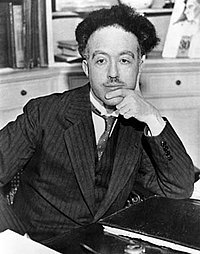de Broglie hypothesis

Matter waves are a central part of the theory of quantum mechanics, being an example of wave–particle duality. All matter can exhibit wave-like behavior. For example, a beam of electrons can be diffracted just like a beam of light or a water wave. The concept that matter behaves like a wave was proposed by Louis de Broglie in 1924. It is also referred to as the de Broglie hypothesis Matter waves are referred to as de Broglie waves. Any aspect of the behaviour or properties of a material object that varies in time or space in conformity with the mathematical equations that describe waves. The de Broglie matter wave would be a stationary wave, which only allows for some very specific modes of vibration (quantization) that would be n entire wavelengths.
The de Broglie wavelength is the wavelength, λ, associated with a massive particle and is related to its momentum, p, through the Planck constant, h:
λ = h/p = h/(mv)
where m is the mass of the particle and v is its velocity.
De Broglie waves account for the appearance of subatomic particles at conventionally unexpected sites because their waves penetrate barriers much as sound passes through walls. Thus a heavy atomic nucleus occasionally can eject a piece of itself in a process called alpha decay. The piece of nucleus (alpha particle) has insufficient energy as a particle to overcome the force barrier surrounding the nucleus; but as a wave it can leak through the barrier—that is, it has a finite probability of being found outside the nucleus.
De Broglie waves around a closed loop, such as would be associated with electrons circling nuclei in atoms, can persist only if the standing waves fit evenly around the loop; otherwise they cancel themselves out. This requirement causes the electrons in atoms to select only particular configurations, or states, among the many that would otherwise be available.

de Broglie’s hypothesis: wave-particle duality
Quantum Wave Interference simulation
REFERENCES
Encyclopædia Britannica. Available in: https://www.britannica.com/science/de-Broglie-wave. Access in: 05/09/2018.






















0 comments
Sign in or create a free account